In 1670, Prince Rupert, a duke, three earls, and other nobles subscribed to the Company of Adventurers of England Trading Into Hudson’s Bay and were granted a royal charter from the English Crown. This was the birth of the Hudson’s Bay Company (HBC). The grant consisted of all lands which drain into Hudson’s Bay and HBC was given all of the powers of a sovereign nation to govern this territory which was called Rupert’s Land.
The European fur traders-mostly French and Scots with a few Englishmen-quickly understood that trade with Indian nations depended upon relationships and that one of the best ways to establish relationships with the First Nations was to marry a native woman. One of the consequences of these marriages was children who were often raised in two cultures. By the nineteenth century the Métis were recognized as a distinct people. The Métis are generally seen as an ethnic group of mixed Cree, Ojibwa, Saulteaux, French Canadian, Scots, and English.
In the nineteenth century the Métis established a community along the Red River in what is now Manitoba, Canada. Inspired by the seigneurial system of New France, the Métis used a riverlot system in which there were parallel lots along the river which were 6 to 12 chains in width (1 chain = 66 feet) and which then stretched back from the river as far as two miles. This provided each family with a variety of natural resources which they could use.
While the Métis were mainly French or Michif-speaking, there were also some Anglo-Métis (often the descendents of the Scots traders associated with the North West Company). Most of the Métis were Catholics.
In 1867 the Constitution Act officially proclaimed the Canadian Confederation which was initially made up of four provinces: Ontario, Quebec, Nova Scotia, and New Brunswick. The expansion of Canada was blocked by Rupert’s Land which was controlled by HBC. Two years later HBC relinquished Rupert’s Land to Canada. Canada appointed an English-speaking governor for the new territory, an appointment which was opposed by the French-speaking Métis. The new governor was well-known for his anti-French sentiments.
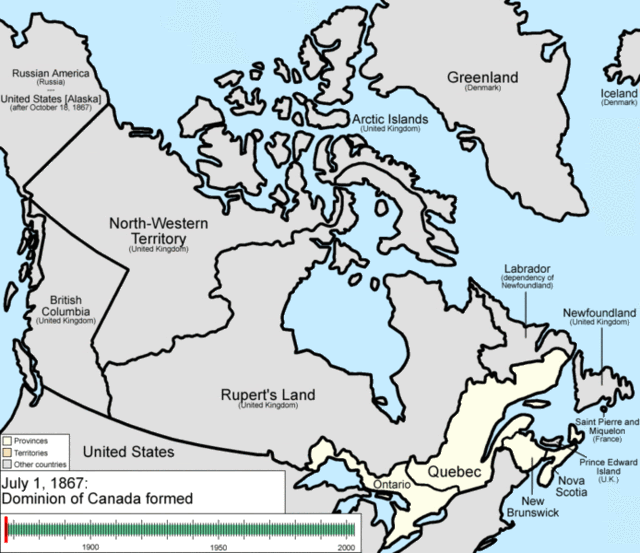
The transfer of jurisdiction from HBC to Canada was not seen as favorable by the Métis who feared that Canada would not recognize their land rights and their riverlot system. In 1869, the Métis established a regulatory council and seized the HBC’s Fort Garry without bloodshed. The Council, under the leadership of Louis Riel, drafted a List of Rights and established a provisional government. Their flag was a fleur-de-lys with a four-leaf clover and bison on a white background.
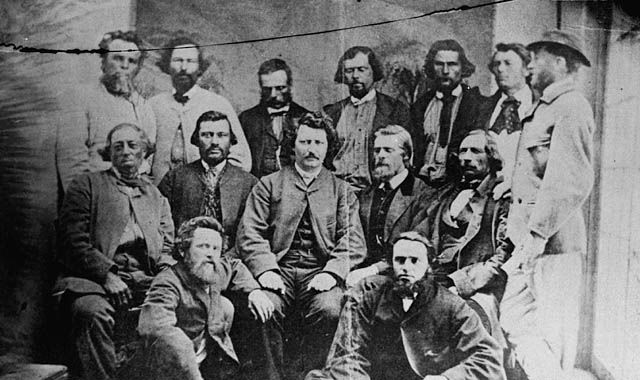
The Métis provisional government is shown above.
The List of Rights was composed of fourteen points, which included a bilingual legislature and chief justice, and a recognition of Métis land claims. Most of the English-speaking people in the region viewed these rights as reasonable.
The Métis provisional government met with some opposition from a pro-Canadian faction. An Orangeman (i.e. Protestant) named Thomas Scott threatened to kill Louis Riel, was arrested, tried, and then executed.
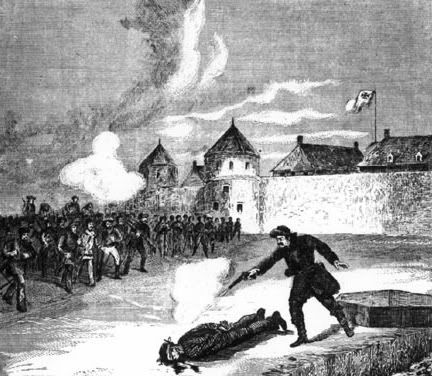
An artist’s depiction of the shooting of Thomas Scott is shown above.
In 1870, the Métis provisional government, with Louis Riel as its president, negotiated with the Canadian government concerning the Manitoba Act which provided provincial status. The Act also gave the French language and Roman Catholic confessional schools official status. The Act recognized the Métis riverlot system, their hay privileges, and their common grazing rights. Riel declared:
“no matter what happens now, the rights of the métis are assured by the Manitoba bill: it is what I wanted-my mission is finished.”
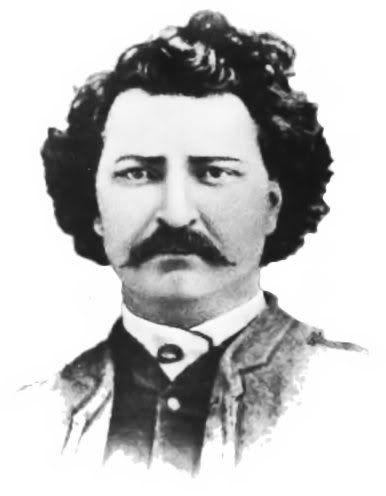
Louis Riel is shown above.
Following the formation of the province of Manitoba, a military expedition known as the Wolseley Expedition composed of Canadian militia and British regular soldiers under the leadership of Colonel Garrnet Wolseley was sent to Manitoba to enforce federal authority. Easterners demanded that Wolseley’s expedition be used to arrest Louis Riel and end what they considered a Métis rebellion. The Canadian militia had expressed a desire to lynch Riel. Riel, fearing for his life, fled to the United States.
In 1875, Louis Riel was formally exiled from Canada for five years. In spite of being exiled, Riel is often called the “Father of Manitoba” and was elected to the Canadian House of Commons three times even though he never assumed his seat.

A statue of Riel in Manitoba.
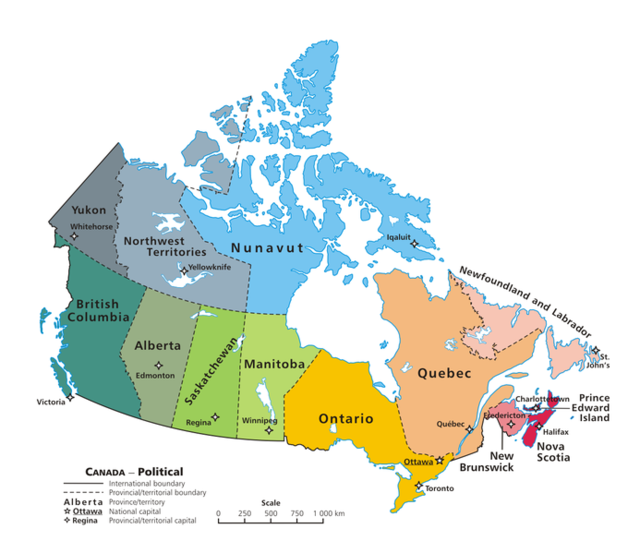
Present day Canada is shown above.
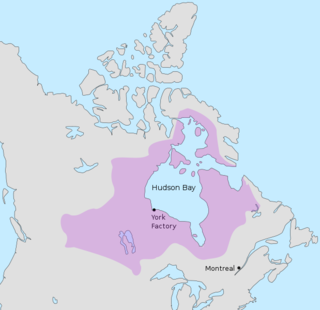
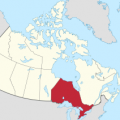
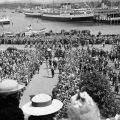
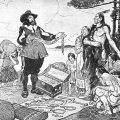
Leave a Reply